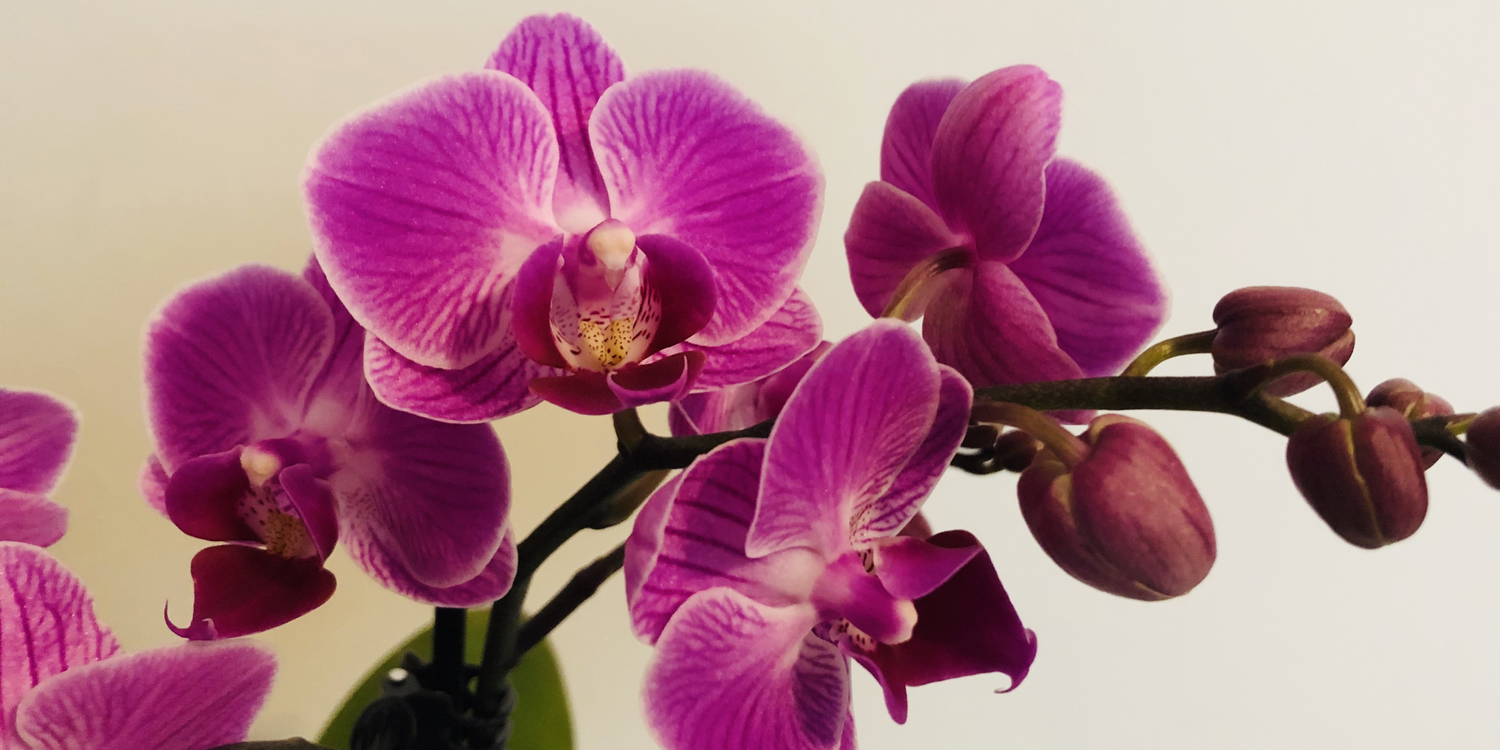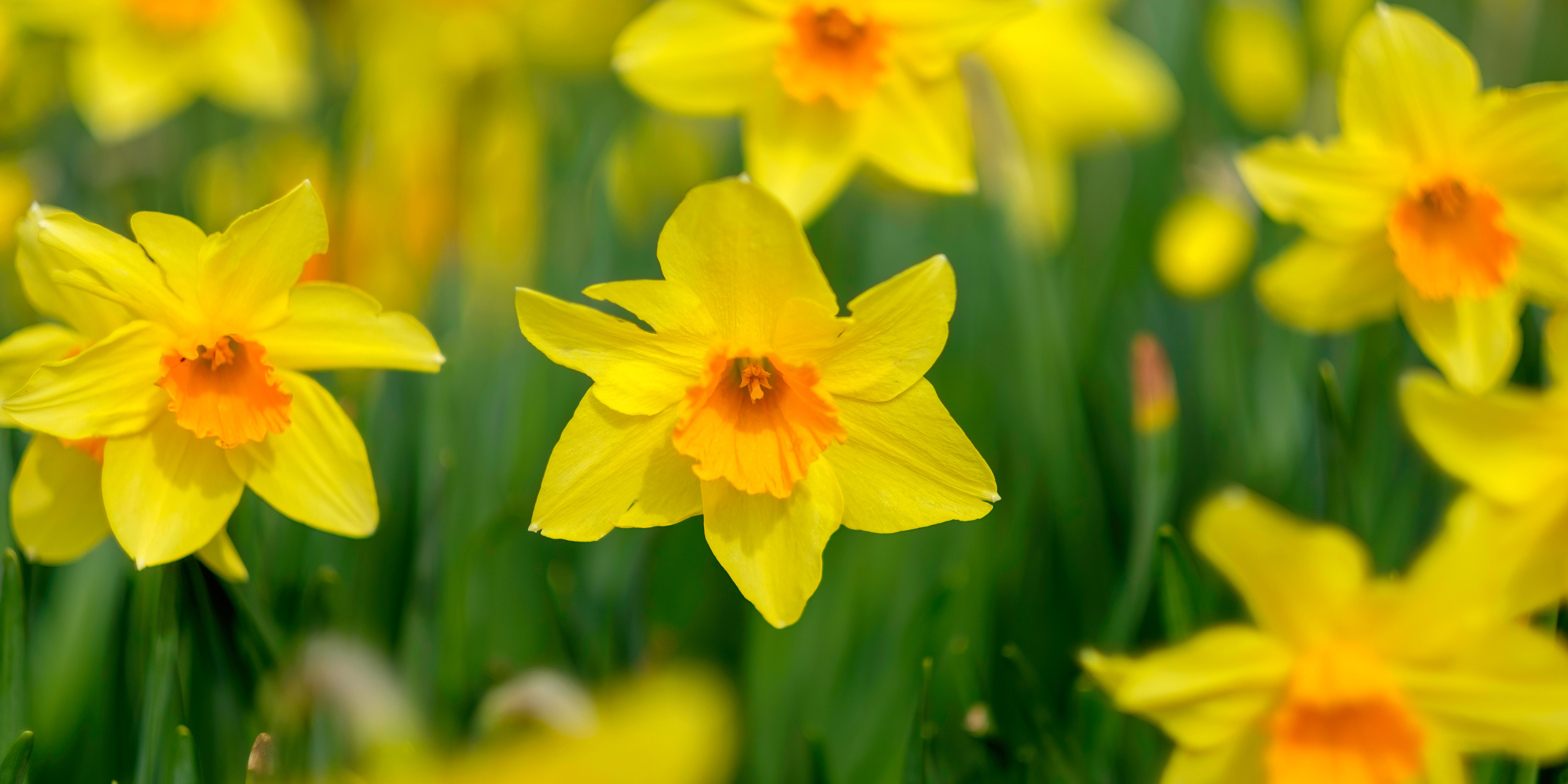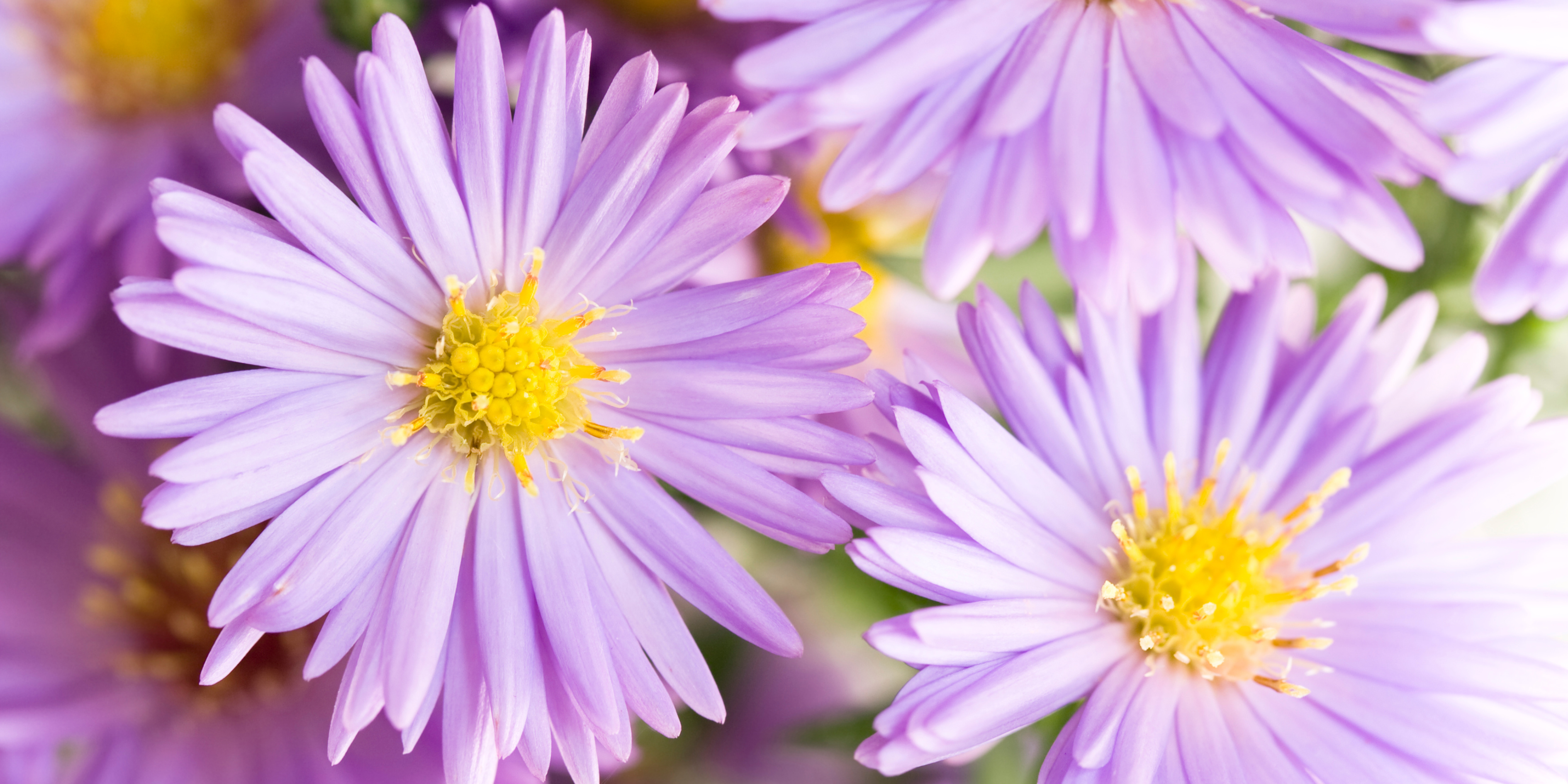The orchid is a flower rich in symbolism and meaning, steeped in history and culture. There are thousands of different types of orchids in an array of magnificent colours, each with their own unique symbolism.
Orchids come from all over the world and are one of the oldest known flowers in existence. As amazing in a bouquet as they are in a planter pot, it’s easy to see why orchids are among the most popular flowers in the world.
They’re not only beautiful, they’re a truly fascinating flower. Read on to learn all about orchid symbolism and more!
Orchid flower meaning & symbolism

As one of the world's most ancient and widespread flowers, the orchid has developed a number of different meanings among various cultures throughout history.
Orchid symbolism in Asia
In China, orchids are primarily symbols of beauty and good taste. They are also symbols of wealth, power, respect and admiration.
The famed Chinese philosopher, Confucius, is known to have been particularly fond of orchids. He references them several times in his works, comparing them to noblemen and friends.
Orchids have similar symbolism in Japan. They’re said to represent purity and elegance, and the royal family considered them symbols of wealth and power.
One particular kind of orchid, Neofinetia falcata, also known as the “wind orchid” or the “Samurai orchid”, was seen as a symbol of bravery and peace by the Japanese warriors.
Orchid symbolism in Ancient Greece
The name "orchid" actually comes from the Greek word "orkhis", meaning testes, owing to the appearance of the orchid's tubers.
Stemming from this, orchids became symbols of fertility and virility in Ancient Greece. In fact, it was believed that the tubers of certain orchid species could be eaten to increase a man's sex drive and potency.
The Ancient Greeks also believed that eating the tubers could determine the sex of a child. Men would eat large root tubers if they wanted a boy, while women would eat small root tubers if they wanted a girl.
Orchid symbolism & The Aztecs
To the Aztecs, orchids were symbols of strength and power. They would mix vanilla orchids (which we'll talk about more a bit further down) with cocoa to create an elixir that supposedly promoted strength and courage in battle.
Orchids symbolism in Victorian England
During the Victorian Age, orchids were seen as symbols of supreme luxury and wealth. Only the very rich could afford to have orchids in their homes, as they were extremely difficult to grow and care for.
For a time, orchids were so highly sought after that the Victorians began to suffer from "Orchidelirium", an obsession with collecting the rare and beautiful bloom.
In floriography, the language of flowers which gained popularity in the Victorian age, orchids could be given to someone as a way to convey a message of love or to tell a woman she was beautiful.
Orchid meanings by colour

Like any bloom, the meaning of an orchid flower varies depending on the colour. Orchids come in a veritable rainbow of hues, each with their own meaning:
-
White orchids are often seen as symbols of purity and innocence. They can be given as a sign of appreciation, respect, or reverence. White orchids can also be used to convey a message of hope or new beginnings
-
Purple orchids are often seen as symbols of royalty and wealth. They can also be used to express admiration, respect, or dignity
-
Yellow orchids convey happiness, joy and strength. They are often given as a congratulations flower or to wish someone good luck. They also convey friendship, warmth, and well-wishes
-
Pink orchids are most often seen as symbols of femininity, grace and elegance. They can also be used to show admiration, appreciation, or gratitude
-
As with most red blooms, red orchids are associated with desire, passion and love. They can be given as a way to say "I love you" or to express deep affection. Red orchids can also be used to symbolise strength, courage and respect
-
Orange orchids are said to represent excitement, enthusiasm, and determination, as well as to show appreciation and pride
-
Green orchids are often seen as symbols of good luck, harmony, good health and good fortune
-
Blue orchids are very rare, and as such are often seen as symbols of rarity and uniqueness
- Black orchids are not truly black; they’re usually over-pigmented red or purple orchids that are so dark they only appear to be black. These blooms are said to represent mystery, power, and sophistication. They can also convey a message of strength, determination, absolute power and authority.
Orchid History & Insights

Orchids are thought to have existed for over 100 million years and are one of the oldest known flowering plants in the world.
They belong to the family Orchidaceae, which is also one of the world's largest families of flowering plants. There are over 25,000 different species of orchids, and new ones are being discovered all the time.
These incredible blooms can be found on every continent, with the exception of Antarctica. South America and Asia have the most diversity, with thousands of native orchid species each. Meanwhile, in Australia, we have about 1,200 native orchid species.
The vast majority of orchids are found in tropical regions and rainforests close to the equator, but they grow easily in lots of different conditions. This may be what has helped them become so widespread throughout the world. Despite this, some orchids are endemic to the particular region in which they are found and can only grow there.
Some orchids are terrestrial, meaning they grow out of the ground. This includes all European orchids. Other orchids are lithophytes, which means they grow on the surface of rocks.
But the vast majority of orchids are epiphytes, which means they grow on the surface of other plants or trees. These orchids get their nutrients and moisture from the air and rain, not from the soil. They have symbiotic relationships with the plant they grow on, and also with certain types of fungi.
Orchid Uses
Orchids have been cultivated and used by humans for centuries not just for decoration and gifting, but also for medicinal and culinary purposes.
Medicinal Uses of Orchids
In traditional Chinese medicine, certain types of orchids were used to treat a wide range of ailments, from bad eyesight to cancer, usually in the form of tea.
In Taiwan, Korea and Japan, a type of orchid, Dendrobium, has been used for the treatment of stomach aches, night sweats and more.
In America, vanilla orchids were used to treat hysteria, fevers and impotence. Other kinds of orchids were used to treat wounds, sunstroke and for sedation.
Today, orchids are being studied for their potential use in the treatment of cancer. Indeed, a compound extracted from a commonly grown orchid could be used in a potential new treatment for prostate cancer.
Culinary Uses of Orchids
Something few people may realise is that vanilla flavouring comes from a type of orchid. The vanilla bean is actually the seed pod of the vanilla orchid, the only type of orchid to produce edible fruit. Vanillin, an organic compound derived from the vanilla bean, is what produces the instantly recognisable flavour and fragrance. It's used in baking, the perfume industry and, of course, to make the world's most popular ice cream flavour!
In the Middle East, orchid tubers are ground up to make a starchy, flour-like powder known as salep. Together with milk and sugar, salep is used to make a type of hot, creamy, comforting beverage, popular in Turkey and other parts of the Middle East. Salep is used as an ingredient in some desserts, such as Turkish Delight.
Orchids in Research
Orchids are being studied for their use in bioremediation, which is the process of using living organisms to remove or repair environmental damage.
Orchids have a unique ability to absorb heavy metals and other toxins from the air, soil and water. Researchers are hopeful that this quality can be harnessed to help remove pollution from contaminated areas.
Orchids in Business
It’s no secret that orchids are prized for their exotic beauty and are in high demand all over the world. They’re often found in the lobbies of five-star hotels, airport lounges and in high-end restaurants. If you’re ever in Bangkok be sure to check out the stunning orchid display in the lobby of the Shangri-La Hotel. It is truly an amazing visual and the smell is intoxicating!
Orchids are one of the most popular cut flowers in the world. They’re popular with florists and flower lovers alike due to their array of striking shapes and mesmerising colours. Orchids add drama and a sense of luxury to any bouquet they’re featured in!
There is a huge industry in hybrid orchids, which are created by cross-breeding the natural varieties. Thailand and Singapore are well-known for the creation and export of these hybrid orchids, both as cut flowers and plants.
The most expensive orchid ever sold is said to have been the Shenzhen Nongke Orchid, which was created by scientists over eight years of research. It reportedly fetched $290,000 AUD per flower at auction—all of that money for a plant that only flowers once every 4 or 5 years!
How to care for cut orchids

With proper care, your orchids may last up to 21 days in a vase. Fortunately, orchids require pretty much the same basic care as all other cut flowers in a vase.
Here are some simple care tips to keep your cut orchids happy in their vase:
- Trim the stems about an inch and at an angle to increase surface area for water absorption
- Strip any foliage that will sit below the waterline
- Add about one cup of water to the vase—don't fill it all the way up
-
Add flower food to the water and replenish it every time you replace the water. If you don't have flower food, you can make a solution of chlorine bleach, white sugar and white vinegar
- Change the water and wash the vase every two days or so to prevent the growth of bacteria and mould
- If possible, choose orchids that are at least partially still in bud, so that they bloom at home and last longer
- Keep the orchids away from ripening fruits, which release gasses that will make your orchids wilt faster.
How to care for orchid plants

An orchid plant is a popular gift for many occasions, including birthdays and Mother's Day. But the beautiful blooms have a reputation as being difficult to grow and care for. It's true that they are very sensitive to changes in their environment, so even small fluctuations can affect them.
If you're lucky enough to have been given an orchid, or have purchased one to grow yourself, here are a few orchid care tips to help you keep your luxurious bloom happy and healthy:
- Orchids like bright, indirect sunlight. Too much sun will scorch their leaves, while too little will prevent them from blooming
- Water your orchid frequently, making sure to soak the roots completely. Allow the plant and the soil to dry out thoroughly before watering again to prevent root rot
- Orchids love humidity, so misting them with water a few times a week will help to keep their leaves healthy. You can also use a humidifier, or keep them in a steamy room, like the bathroom
- Fertilise your orchid every two weeks with an orchid-appropriate fertiliser during its growing season, then reduce to one a month or less during their dormant period
- Repot your orchid every one to two years, using a well-draining potting mix and taking care not to damage the roots.
Some of the easiest orchids to grow at home include the phalaenopsis orchid (also known as the moth orchid), cymbidium orchids and oncidium orchids (also known as dancing lady orchids).
***
Did you learn something new about orchids? We hope so! If you loved this article and want to learn more about flowers, check out other articles in our Flower Insights series, including one on asters and one on the lotus flower.
Or you can explore our Flower Delivery Melbourne and Flower Delivery Sydney collections to see what flowers we can deliver to your loved ones in these locations.



